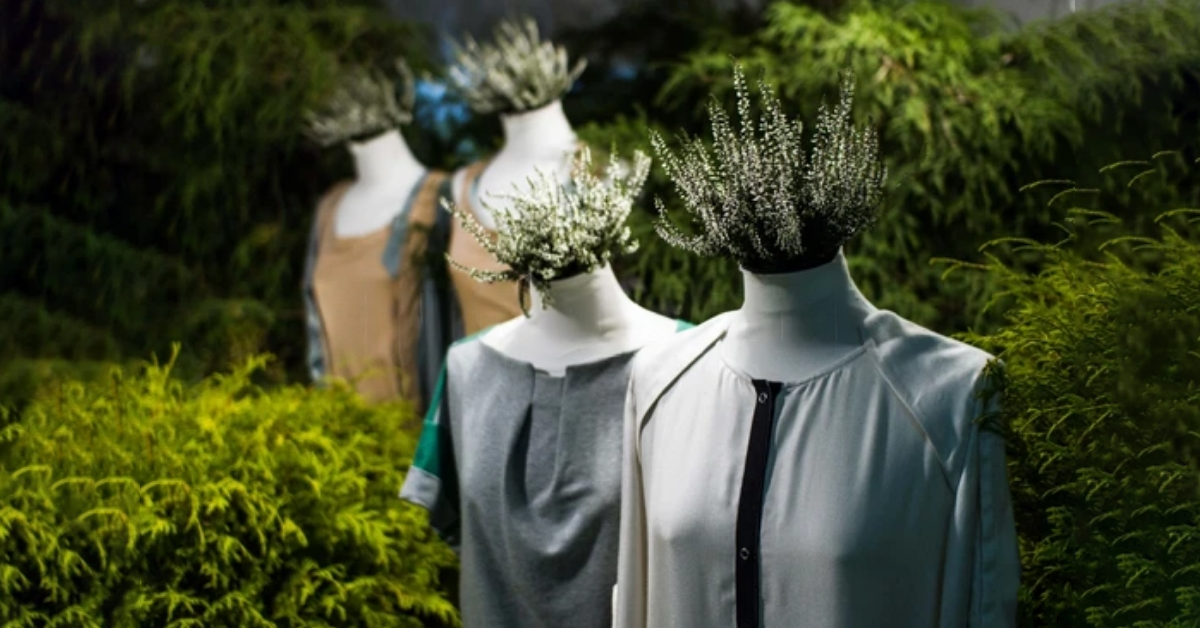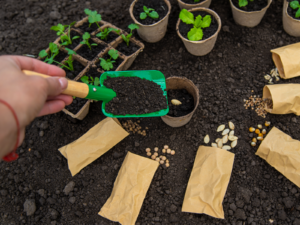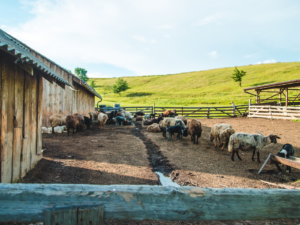The fashion industry is witnessing an increase in fast fashion generated by cheaper and speedier manufacturing and shipping methods. This trend is driven by consumer’s desire for the latest styles and their increasing purchasing power, resulting in a significant environmental problem; textile waste, which is classified into two major types: pre-consumer and post-consumer textile waste.
Textile Waste
To keep up with the growing appetite for ‘fashionable clothes’, clothing items are being mass-produced. This is when the pre-consumer textile waste is spawned. During manufacturing, waste is generated from spinning, weaving, knitting, cutting, dying, and finishing. Once the production of the clothes is finalized, all the discarded scraps and materials are turned into waste. Consequently, the energy and resources used to produce these scraps and materials are also wasted.
On the other hand, post-consumer textile waste is generated when the lifespan of the clothing article has reached its end. Clothes or fabrics that are worn out, ill-fitting, damaged, or outgrown are discarded in an environmentally hazardous manner, contributing to overall pollution levels.
Annually, discarded clothes, textiles, and footwear contribute to approximately 5-6% of the solid waste generated in Lebanon, impacting the environment, and leading to water pollution, greenhouse gas emissions, and piling landfills.
Environmental Impacts of Textile Waste
It is estimated that 20% of global wastewater comes from the fashion industry worldwide. This is because textile manufacturers require a significant amount of water to produce their items. Producing a single t-shirt, for example, requires 2,700 liters of water, which is equivalent to the amount of water that is consumed by an average person over 2.5 years. Moreover, the wastewater generated from the production process contains many chemicals that normally end up in oceans and seas; thus, polluting the water around these manufacturing warehouses and affecting the marine life in them.
According to a working paper published by the International Labor Organization, the textile industry is responsible also for 6-8% of global greenhouse gas emissions. This is due to the energy that is needed to produce fabrics such as coal and natural gas. However, greenhouse gas emissions continue even post-production throughout the supply chain in the transportation of these materials to their end destinations through air and freight.
When the lifespan of clothes or fabrics comes to an end, the majority ends up in landfills. This is especially dangerous since they turn into a hub for hosting microbes. In addition, because of the plastic that is found in these materials, this waste can take over 200 years to decompose during which greenhouse methane gas and toxic chemicals and dyes are released into the ground and soil; thus, contaminating the land.
Addressing Textile Waste
It is quite evident that textile waste poses a threat to the environment, and this is why it is crucial to address this issue from the onset. In the pre-consumer phase, manufacturers need to deconstruct and recombine the generated waste to be able to use them in different ways. By doing so, not only will they be able to reduce their costs since it will maximize the usage of their inventory, but they will also reduce the amount of textile waste that is generated.
Individuals can adopt several ways to reduce their textile waste on the post-consumer side. This can be done by increasing the number of times they wear their clothes until they are completely worn out instead of only wearing them a handful of times. Another method of reducing waste would be repairing the clothes they already possess should tear and wear occur or simply using them for other purposes such as creating rags for cleaning. As a result, these items end up serving another purpose instead of ending up in landfills.
To annihilate buying new clothes is somewhat unattainable. Being mindful of the garments purchased is a big step towards protecting the environment. This can be done by adopting the mindset of mainly buying good quality clothes that are made of eco-friendly materials that can last long periods. Many production warehouses nowadays are adopting and promoting the use of these sustainable materials that are not only fashionable but also help preserve the environment. Another way would be to buy used clothes from second-hand stores, a concept that is on the rise in Lebanon.
If it is imperative to discard specific items, individuals should consider donating them to either family members or entities such as FabricAid or Banin who give them a second life. “The clothes that we collect that are of good quality, are sold to the marginalized communities in Lebanon at extremely reduced prices; whereas, the materials that cannot be sold in their original formats are turned into other products such as bags in their different formats, pillows, and other types of corporate gifts that are in turn exported outside of Lebanon,” said Omar Itani, Founder of FabricAid. Other options also include renting out clothes or selling them online; thus, generating income while protecting the environment.
Another initiative devised an innovative way to address the textile-waste problem in Lebanon. Reborn, founded by Zeina Farah, is a sustainable manufacturing facility that buys garments from its customers and turns them into women’s sportswear. “We have succeeded in reducing the number of textile shreds that are generated from our production; however, we still had to deal with the inevitable waste generated from this production that normally ends up in landfills to achieve a zero-waste process,” said Farah.
Because Farah and her team come from an engineering background, they have succeeded in launching another promising startup, RBNTech, an alumnus of the DAWERR Activity funded by the United States Agency for International Development (USAID). RBNTech turns the generated textile waste into insulation materials that are used in construction. By doing so, they are eliminating textile waste and contributing to reducing the carbon footprint resulting from heating and cooling housing units. They are also contributing to saving virgin resources from being used in the production of these insulation materials since they are replacing them with recycled raw materials.
There is great value in recycling textile waste. “More importance should be given to slow fashion by creating good quality clothes that last longer,” says Rita Mouccarri, Head of Production at Craze Station, an apparel factory based in China. “All the waste that is generated from our factory is given to the government for recycling where the materials are deconstructed to create more raw materials that can be reused for the production of clothes,” she concludes.
Social and Economic Impact
By recycling and upcycling clothes, the number of textile waste that ends up in landfills is reduced, diminishing the elements that contribute to climate change. They also contribute to lowering the monetary cost and environmental impact of producing new raw materials. In addition to the impact that recycling has on the environment, there is also a great social and economic impact since the different types of textile waste that are no longer of use can be shredded and turned into felt, which in turn can be used to produce different products such as blankets for refugees, different types of accessories and bags, as well as insulation materials for construction.
About DAWERR
DAWERR: Diverting Waste By Encouraging Reuse And Recycling is a five-year activity funded by the United Stated Agency for International Development (USAID) that aims to improve the social, environmental, and economic well-being of Lebanese citizens by establishing sustainable solid waste recovery and diversion programs in collaboration with municipalities throughout rural areas in Lebanon.
DAWERR is implemented by ECODIT in partnership with Berytech, Compost Baladi, and ECODIT Liban.










